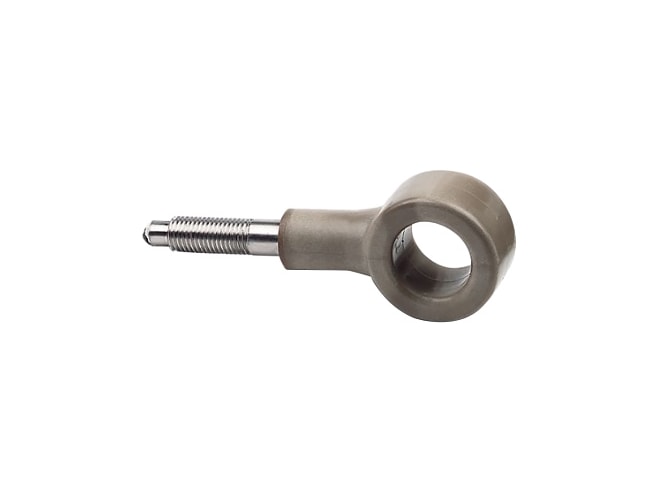
Rosemount Analytical Model 226 Conductivity Sensor
Toroidal non-contacting, rugged, large bore sensor, withstands harsh conditions.

Overview
Features
- Wetted Materials: Glass-filled PEEK
- Temperature: 248ºF (120ºC) maximum
- Pressure: 295 psig (2135 kPa abs)
- Cable length: 20 ft (6.1m)
- Max cable length: 200 ft (61m)
Description
The Rosemount Analytical Models 225, 226, and 228 toroidal (inductive) conductivity sensors consist of a pair of wire-wound metal toroids overmolded with corrosion-resistant PEEK or Tefzel. One coil is the transmitter, and the other coil is the receiver. When the sensor is immersed in a conductive liquid and the transmitter coil is energized, the coil induces a current in the solution. The solution current induces another current in the receiver coil, which the analyzer measures. The current in the receiver coil is directly proportional to the conductivity of the solution.
The Model 226 is a large bore sensor molded in PEEK (polyetheretherketone). The sensor has a rugged design similar to the Model 228. The Model 226 sensor performs better than the 228 sensor in applications containing high levels of suspended solids — solids tend to plug the smaller opening in the 228 sensor. The large toroids used in the 226 sensor also allow it to measure lower conductivities.
Toroidal sensors are ideal for highly conductive liquids, up to 2 S/cm (2,000,000 uS/cm). The minimum conductivity depends on the size of the toroids and the number of windings in each toroid. Generally, the minimum conductivity is between 50 and 500 uS/cm. The measurement is not sensitive to flow rate or direction of flow. The hole through the toroids must remain open.
Model 200 sensors are compatible with most Rosemount Analytical instruments. All sensors have an integral RTD to allow temperature-compensated conductivity measurements. A mechanical or manual valve insertion assembly is available for use with the Model 228. Refer to Product Data Sheet 71-228 Valve Insertion Assemblies.
Documents
Accessories
Cables
Accessories
Please consider these optional accessories.
Applications
This product can be used in the following applications:
Need Help? Call a Flow engineer at 1-800-884-4967
We're open Mo-Th 8am to 5:30pm. Fr 8am to 5pm ET








